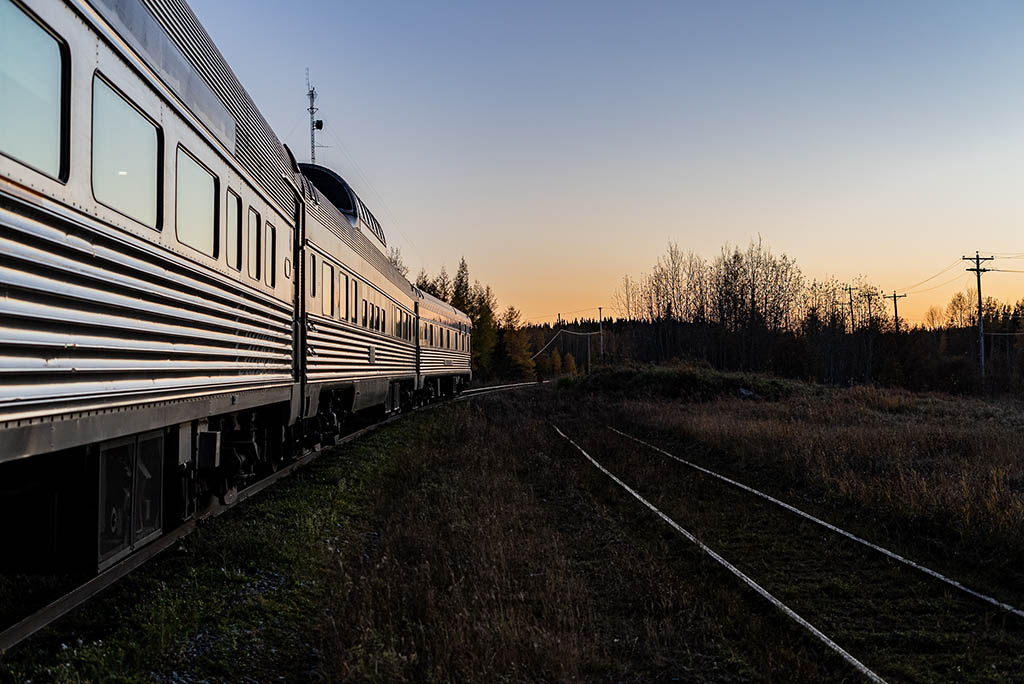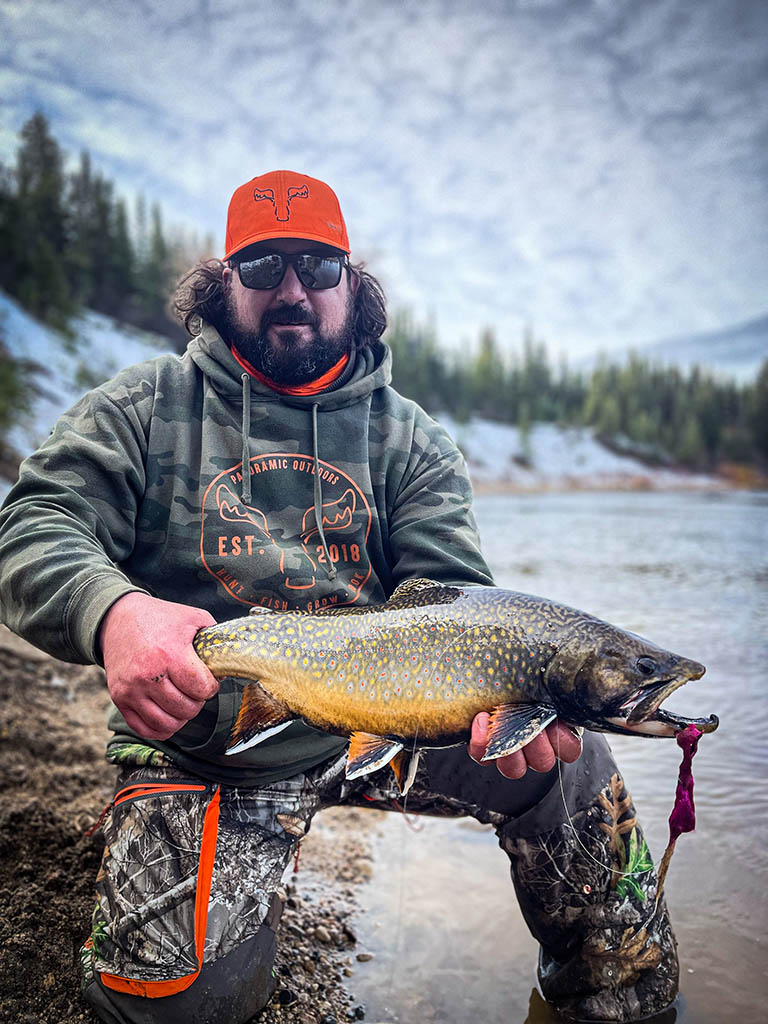By: Chase Dreilich, MWF Recreational Angling Coordinator
In 1836 the first public railway was constructed in Canada. This was the first step in building a reliable system to transport people and freight that would eventually connect the east and the west. In today’s day and age even with technology and air travel, the rail system is still heavily relied upon for freight transportation and is a cost-efficient way to travel. For communities that don’t have vehicle access year-round, it is a primary mode of transportation to other larger towns or cities. Another benefit is cost-effective access to remote areas for hunters, anglers, and outdoor enthusiasts.

I spent a considerable amount of time traveling for work in Northern Manitoba and always had the desire to go on an adventure by train. Part of that adventure on this excursion was moose hunting and backcountry angling. A backcountry trip by rail had started out as a fireside reverie with my brother, and after enough campfires, the decision was made to bring it all to fruition. We recruited two of our best friends to join us and the planning stages began. Planning out a remote adventure by train would be a new experience for me, that would come with a steep learning curve.
Via Rail is the only passenger service offered in Manitoba. Plans began by figuring out what station we would board and arrive at, and what time the train came through these locations. On the rail line, there are various checkpoints or stations along the way. Some of these stations are old sidings or service locations where railway maintenance workers used to live, some are remote communities. When making a booking you can search these locations to see what day, time, and which way the train would be traveling. Now the interesting thing about checkpoints, is they aren’t the only places where the train will stop. The rail line is marked with mile markers. These mile markers serve as a communication tool for track maintenance purposes but also give passengers the ability to stop at remote locations along the tracks on certain trains. Fortunately for us, the trip we planned had us headed to an old maintenance station.
Now one downfall of traveling by train is the travel time. The train does not take the most direct route from point A to point B. To assure safe travel, the train travels to the track conditions which means it may slow down on certain sections. So, if time is an issue for you, this might not be the best mode of travel. To reduce our travel time, we booked our departure from a station that was much closer to our destination. This saved us a day of travel. Even then, we were still looking at a lengthy train ride before we reached our final location. Our total travel time between the train and vehicle was about 22 hours. This is including rest stops, a couple of hours of extra time to organize gear when we arrived at our station, and time to account for any unforeseen circumstances such as a flat tire or breakdown.

Figuring out what we could take on the trip was another interesting learning curve. The best way to get accurate information is to speak with someone from a station along your route. This can also be tricky because not all stations are staffed for regular business hours. Many of the stations only staff the location when a train is passing through, so this may take a bit of research to figure out the best time to reach someone. Some of the best information came from people who travel on the train regularly and have been on similar adventures. Local knowledge is worth its weight in gold in this situation. We traveled with 2 canoes and all the necessary hunting, fishing, camping gear, plus food for a 5-day adventure. If you are planning on traveling with firearms, they do have safety requirements.
Via Rail has several services available and two types of bookings. We booked the economy class, which is the most cost-effective, but there was also the option to book a sleeper car. I will say the economy class was quite comfortable and I didn’t have too much trouble getting some shut-eye. However, if the trip was longer, I would consider getting a sleeper car. Our train also had a viewing car that was called the “park car”. It offers an unobstructed view of the sky and terrain. Our train traveled through the night, which offered us a great opportunity to view the aurora borealis. In addition, Via Rail does offer food and beverage service on the train, including bar service.
Traveling by train does feel slightly different than traveling to a camp by air. But anytime you head into the remote wilderness the same risks apply. Be sure to have emergency plans in place and all the necessary first aid and survival gear needed. Although we did not need any rescuing from outside sources during the trip, we did find ourselves in some unintended situations. Always plan for the worst.
Figuring out the ins and outs of traveling by rail took a bit of time, but it was time well spent. There is quite a bit of information in this article, if you have more questions you can search Via Rail’s website or contact them by phone. Through these experiences, I can tell you that Via Rail treated us very well and we had excellent customer service which eased some of my worries. Although traveling by rail isn’t as fast as traveling by air, it does have the benefit of adding a whole different element of adventure. I can’t help but feel nostalgic traveling through the remote backcountry of Northern Canada by rail like many of our predecessors. I look forward to the next time I can plan another adventure to the wilderness by train.


